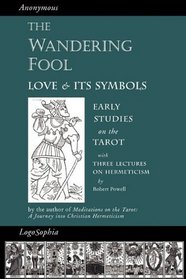Search -
The Wandering Fool: Love and its Symbols, Early Studies on the Tarot
The Wandering Fool Love and its Symbols Early Studies on the Tarot
Author:
In 1982 there appeared a remarkable book, written by an author who wished to remain anonymous, entitled Meditations on the Tarot: A Journey into Christian Hermeticism. This book was destined to become a spiritual classic of the twentieth century. Distinguished scholar Antoine Faivre called it "the most beautiful and instructive book of the twent... more »
Author:
In 1982 there appeared a remarkable book, written by an author who wished to remain anonymous, entitled Meditations on the Tarot: A Journey into Christian Hermeticism. This book was destined to become a spiritual classic of the twentieth century. Distinguished scholar Antoine Faivre called it "the most beautiful and instructive book of the twent... more »
ISBN-13: 9781597315005
ISBN-10: 1597315001
Publication Date: 5/29/2009
Pages: 140
Rating: ?
ISBN-10: 1597315001
Publication Date: 5/29/2009
Pages: 140
Rating: ?
0 stars, based on 0 rating
Genres:
- Religion & Spirituality >> New Age & Spirituality >> Divination >> Fortune Telling
- Religion & Spirituality >> New Age & Spirituality >> Divination >> Tarot
- Religion & Spirituality >> New Age & Spirituality >> General
- Religion & Spirituality >> New Age & Spirituality >> Mysticism




